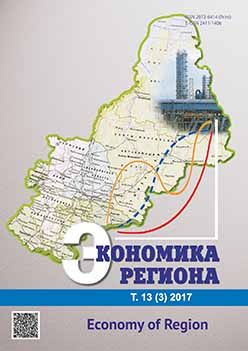Прогноз трудовой миграции, воспроизводства населения и экономического развития России
The Forecast of Labour Migration, Reproduction of the Population and Economic Development of Russia
Author(s): Aleksandra Vladimirovna VasilyevaSubject(s): Economy
Published by: Институт экономики Уральского отделения Российской академии наук
Keywords: labour migration; reproduction of the population; labour market; labour force; economically active population; unemployment; salary; output; forecast; migration policy;
Summary/Abstract: In the medium and long term, at the remaining decline in the population and insufficient development of labour-saving technologies, Russia will be forced to increase its economic potential by the elements of extensive economic development, covering the growing need for labour by migration gain. In this context, an important task of public administration is to increase the efficiency of regulation of the international labour migration in the regions of Russia taking into account features of their demographic and economic development. That makes relevant the forecasts of interdependent development of migration, the reproduction of the population and of the regional economy of Russia. In the article, for the first time, the author proposes the complex model allowing such forecasting by means of the dynamic system of equations including matching function, the Cobb–Douglas production function and etc. The computer program which is characterized by a high speed of data exchange with statistical bases, calibration and forecasting, a wide choice of services for representation of the received results has allowed to automate the realization of the complex model with the use of the Java/Javascript language. As a result of the implementation of the complex model for statistical data, I made the forecast of labour migration, reproduction of the population and economic development of Russia until 2003. According to the received forecast, even at the maximum use of the potential of labour migration from the CIS countries, the total number of the labour of the Russian Federation by 2030 will be reduced almost by 5 % relatively to 2016 and will be equal to 74684 thousand. At the same time, the absolute deficiency of labour force will be followed by the growth of unemployment rate from 5.8 % to 7.1 %. The predicted situation demonstrates the increase of the structural imbalance of supply and demand in labour market as the abilities of job seeker do not meet the requirements of available vacancies. Except the personnel problems, the growth of the Gross Domestic Product of Russia during the forecast period will be slowed down by the low labour productivity as the result of the labour-intensive type of economy with a high share of manual skills, which has remained from the Soviet period.
Journal: Экономика региона
- Issue Year: 13/2017
- Issue No: 3
- Page Range: 812-826
- Page Count: 15
- Language: Russian

